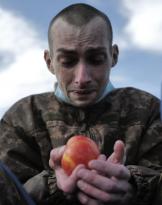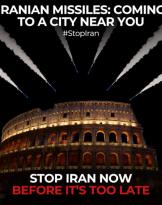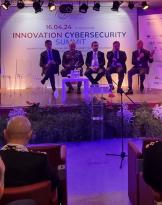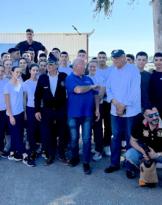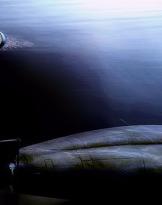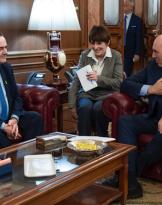Photographs that talk about life, in response to the violence of the Islamic State and despite the difficult condition of displaced persons. A newborn baby, best placed on the ground. Boys dumping fruit boxes from a truck. A mother who buys sweets for her children, to rediscover the beauty of everyday life. But also house cleaning and lunch preparation. The same games done at home and now repeated in that refugee camp by the young, who are the future and perhaps will return home. That future denied to the old and sick Seyfi, who wanted to leave this world where she was born. She died immediately after the photo shoot, as a refugee. How he died Ghali who, after the Isis attack on Sinjar, tried to escape to Germany with his wife and the 5 children. The widow has cut her hair and left them on her husband's grave, tied to the headstone embraced by a scarf.
On display at the 29 January at the National Museum of XXI Century Arts Maxxi in Rome, images taken by the Yazidi girls from the Khanke refugee camp, in the province of Duhok of Iraqi Kurdistan, an event wanted and financed by the Ministry of Defense and Ministry of Foreign Affairs.
The exhibition is itinerant and ours is the first country to host it. The project to give girls an education also through photojournalism courses is international, promoted by Unicef, in collaboration with the Research and Development Organization, a Kurdish non-profit organization. They are Samia Jendo, Manal Barakat, Zina Hassan, Khawla Shamo, Klood Khedada, Bushra Qasim. Maxxi is not an exhibition like the others, because photographers and protagonists at the same time are Yazidi girls aged 17 to 20 who live in that field, who tell the story in the first person, without intermediaries. And the whole message arrives, strong, without discounts.
They escaped with families from the Nineveh region in Iraq when the jihadist militiamen arrived in Sinjar and surroundings in the 2014 and began to kill, kidnap, and rape. That Yazid is a unique, very ancient, cultural and religious community. But even tough people are not bent and this exhibition is an example of their tenacity. This is another reason why ISIS has tried to destroy them, shaving Sinjar to the ground, particularly grieving over women and children, reducing them to slavery, until the city has been liberated from the Kurdish-Yazid militias.

Thus, 400 people decided that they would leave everything, from homes to clothes, everything but not dignity. Samia, Manal, Zina, Khawla, Klood, Bushra have experienced the horror of family members killed, friends raped or blown up on a mine. That horror is before their eyes, but they have decided not to give up. Today they are an example for their community, for that camp that hosts over 17 thousand refugees. Beautiful in traditional costumes, shy, with a camera over her shoulder, which in this case is a weapon that makes more noise than a rifle. Defense Minister Roberta Pinotti, who inaugurated the exhibition, spoke about their emancipation, freedom and future. Roberta Pinotti, who met the girls and the refugee camp during a visit to the Italian contingent in Mosul, reiterated the importance of our Armed Forces and missions abroad in the fight against terrorism.
There is not a subtle thread around these girls, the Yazidis and their cause, from Italy to the Kurdish and Iraqi world at the forefront. Shayda Hessami is a Kurdish journalist living between Erbil and Paris, she was the first link between the girls and all of us. “I had a first meeting with the girls in 2015, through the UN and I realized that something had to be done. I immediately contacted Unicef and the Italian representative: the best way to make Europe hear their voices was to make them speak in the first person about their world and against violence, with their sensitivity, without intermediaries. Italy is the first country to have understood the importance of the project. But it's not me who has to talk about the Yazidi world, it's the girls who have to do it, through their eyes and their words ".
There are various ways of fighting Islamist terrorism and its barbarism. Here, the real warriors are these girls who show themselves to the world without filters, not the cowards who hide behind the Koran. The girls fight Isis through photography, which is an art form. That art that the fundamentalist hordes of the Caliphate are preoccupied with destroying wherever they arrive and not only to finance themselves with the clandestine sale of the finds but also because, obviously, they fear it. They know that, together with a good strategic defense plan, art, which is beauty and therefore life, will bury them.

(photo: Ministry of Defense)



